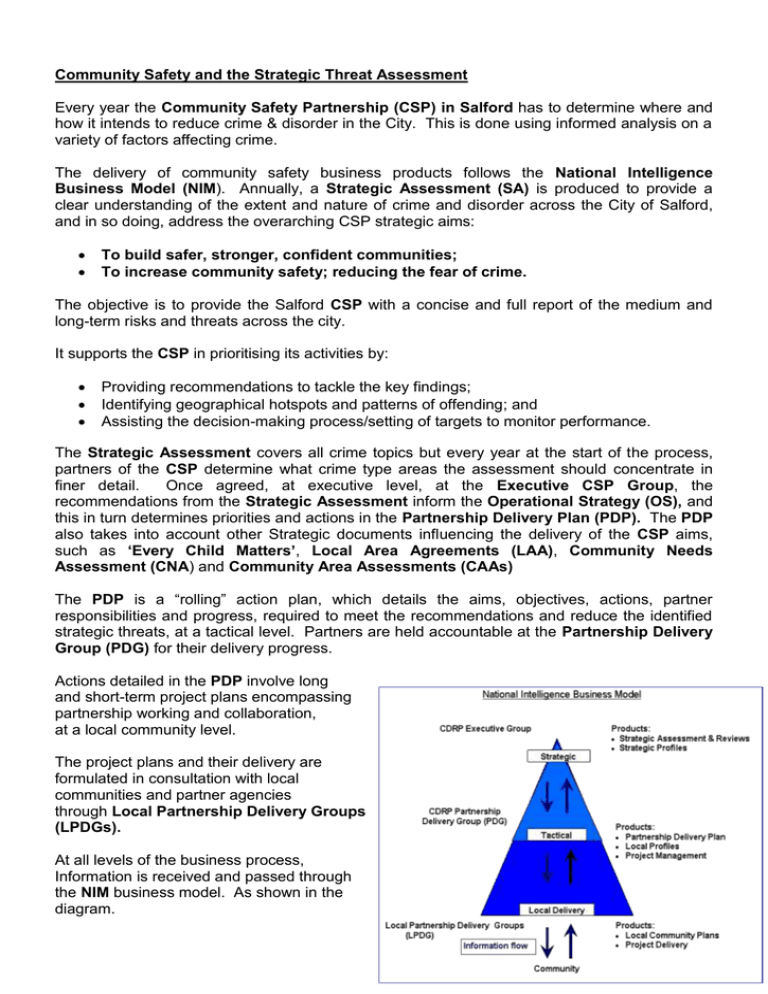Community Safety and the Strategic Threat Assessment
advertisement

Community Safety and the Strategic Threat Assessment Every year the Community Safety Partnership (CSP) in Salford has to determine where and how it intends to reduce crime & disorder in the City. This is done using informed analysis on a variety of factors affecting crime. The delivery of community safety business products follows the National Intelligence Business Model (NIM). Annually, a Strategic Assessment (SA) is produced to provide a clear understanding of the extent and nature of crime and disorder across the City of Salford, and in so doing, address the overarching CSP strategic aims: To build safer, stronger, confident communities; To increase community safety; reducing the fear of crime. The objective is to provide the Salford CSP with a concise and full report of the medium and long-term risks and threats across the city. It supports the CSP in prioritising its activities by: Providing recommendations to tackle the key findings; Identifying geographical hotspots and patterns of offending; and Assisting the decision-making process/setting of targets to monitor performance. The Strategic Assessment covers all crime topics but every year at the start of the process, partners of the CSP determine what crime type areas the assessment should concentrate in finer detail. Once agreed, at executive level, at the Executive CSP Group, the recommendations from the Strategic Assessment inform the Operational Strategy (OS), and this in turn determines priorities and actions in the Partnership Delivery Plan (PDP). The PDP also takes into account other Strategic documents influencing the delivery of the CSP aims, such as ‘Every Child Matters’, Local Area Agreements (LAA), Community Needs Assessment (CNA) and Community Area Assessments (CAAs) The PDP is a “rolling” action plan, which details the aims, objectives, actions, partner responsibilities and progress, required to meet the recommendations and reduce the identified strategic threats, at a tactical level. Partners are held accountable at the Partnership Delivery Group (PDG) for their delivery progress. Actions detailed in the PDP involve long and short-term project plans encompassing partnership working and collaboration, at a local community level. The project plans and their delivery are formulated in consultation with local communities and partner agencies through Local Partnership Delivery Groups (LPDGs). At all levels of the business process, Information is received and passed through the NIM business model. As shown in the diagram.
